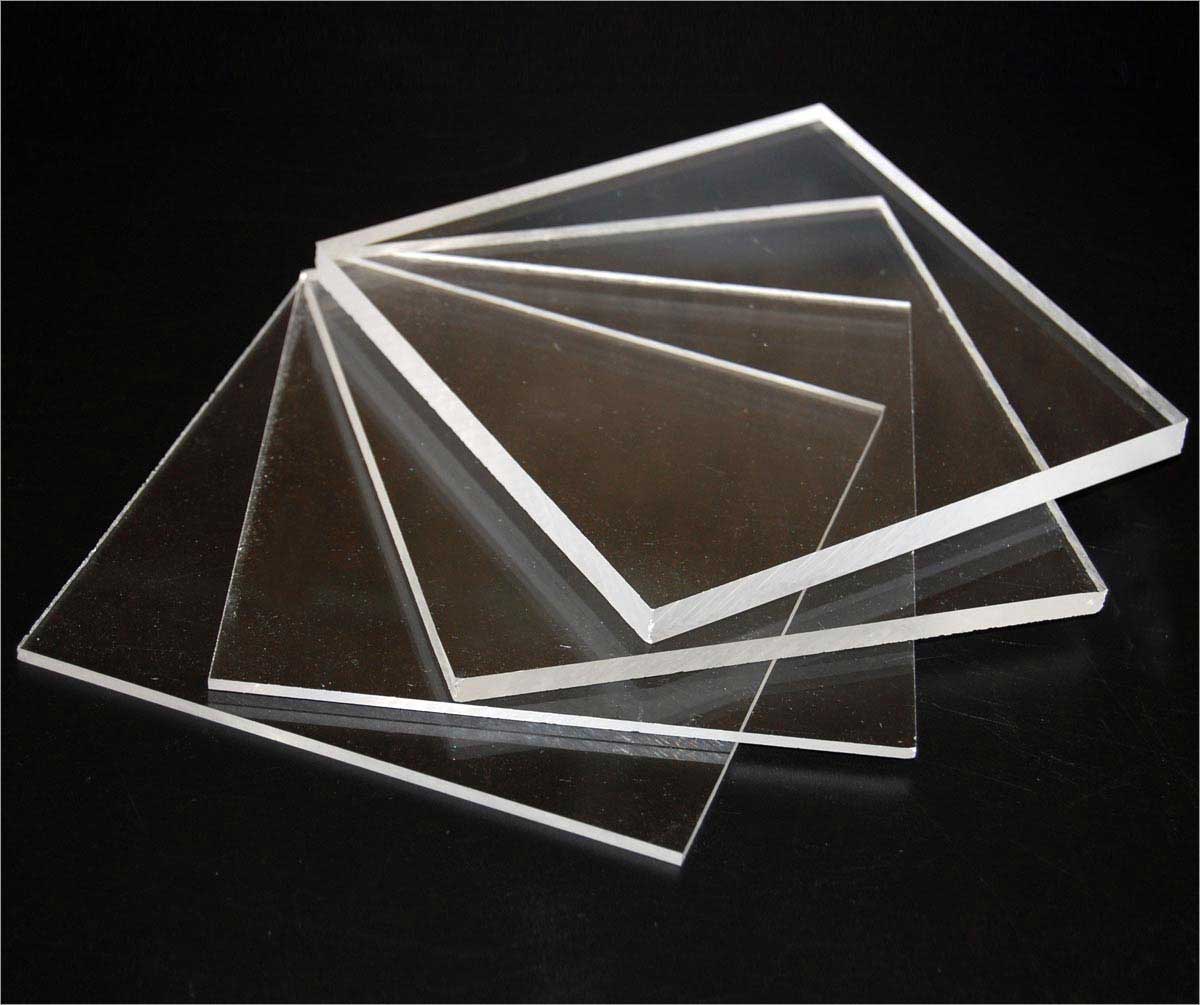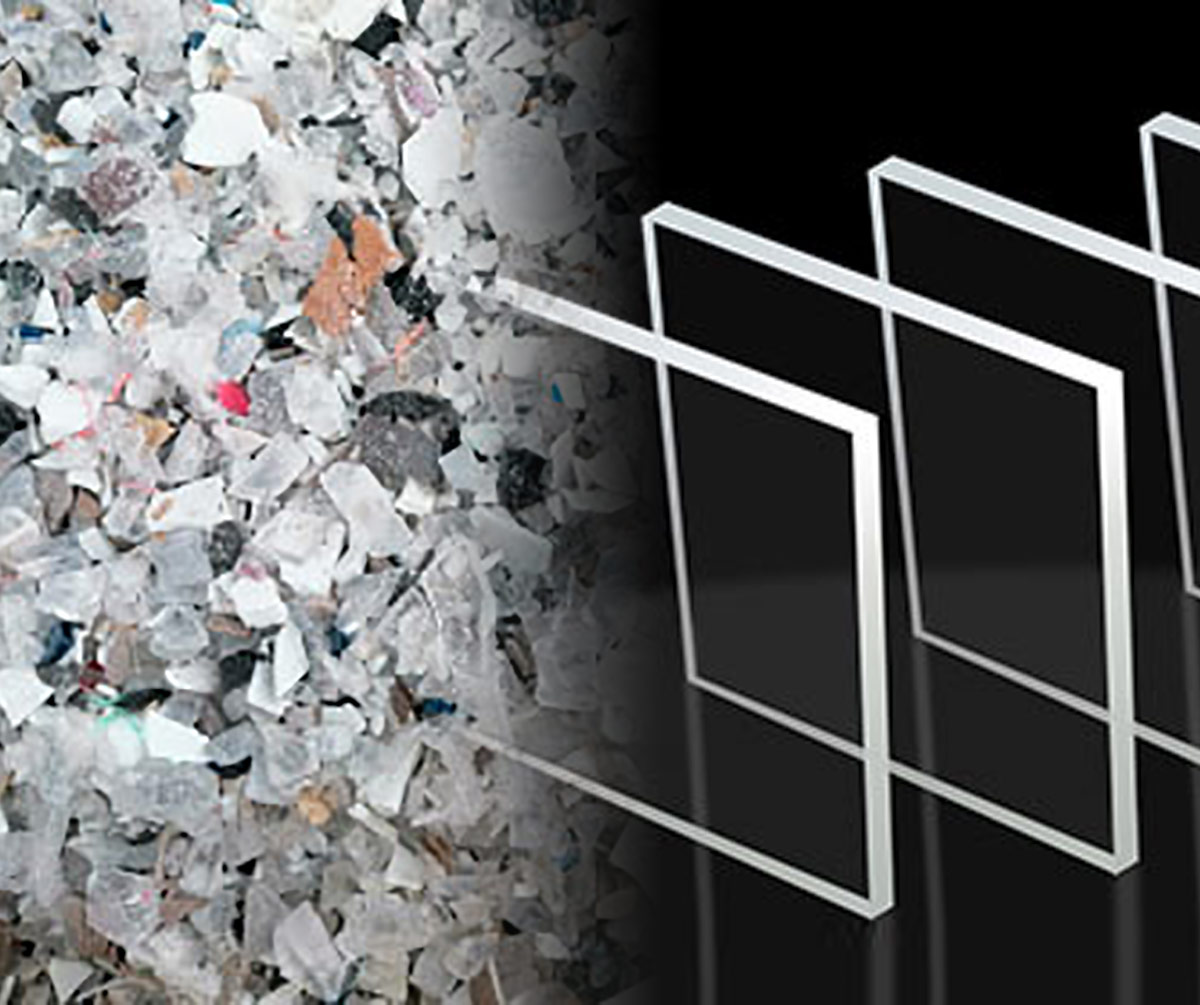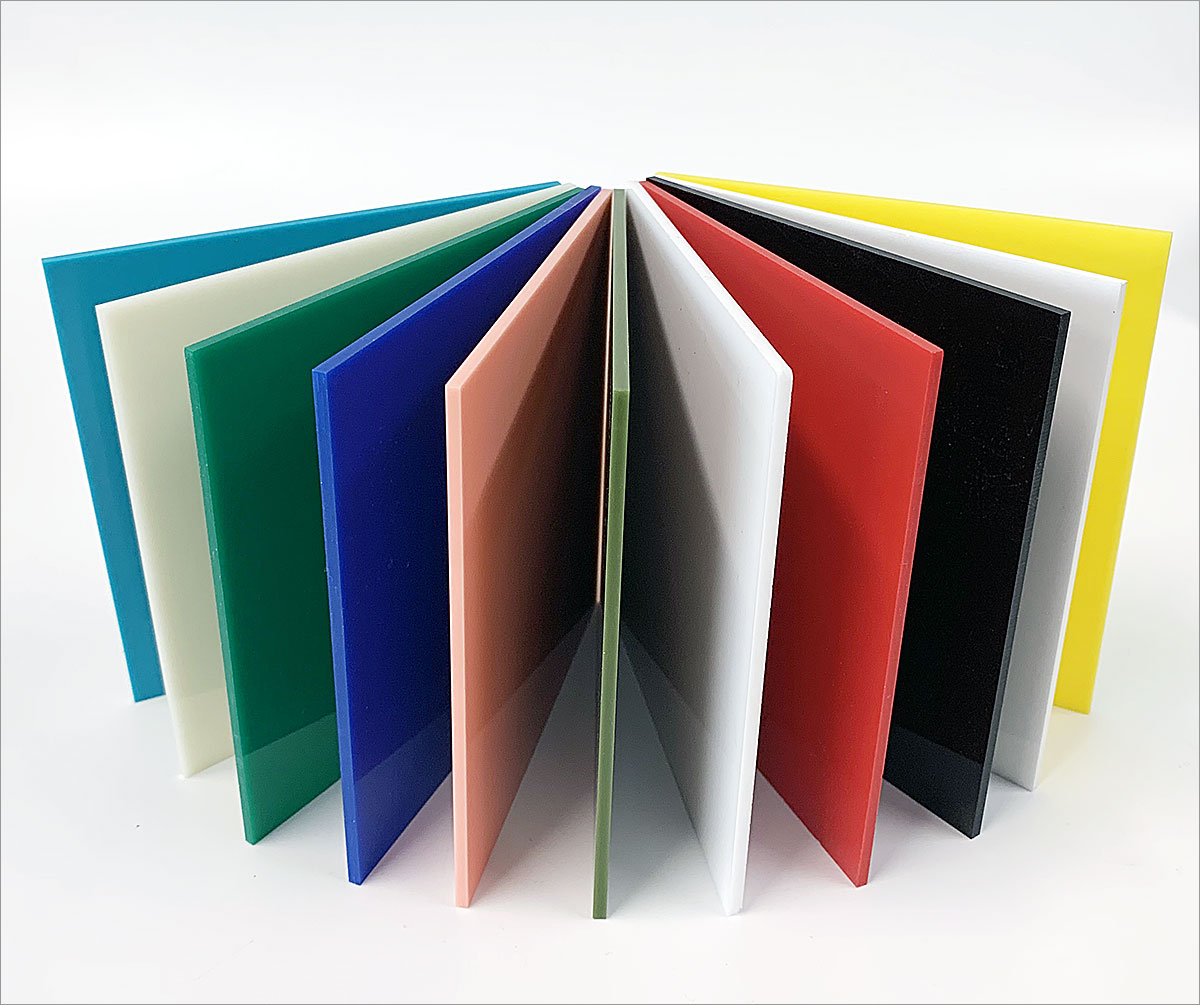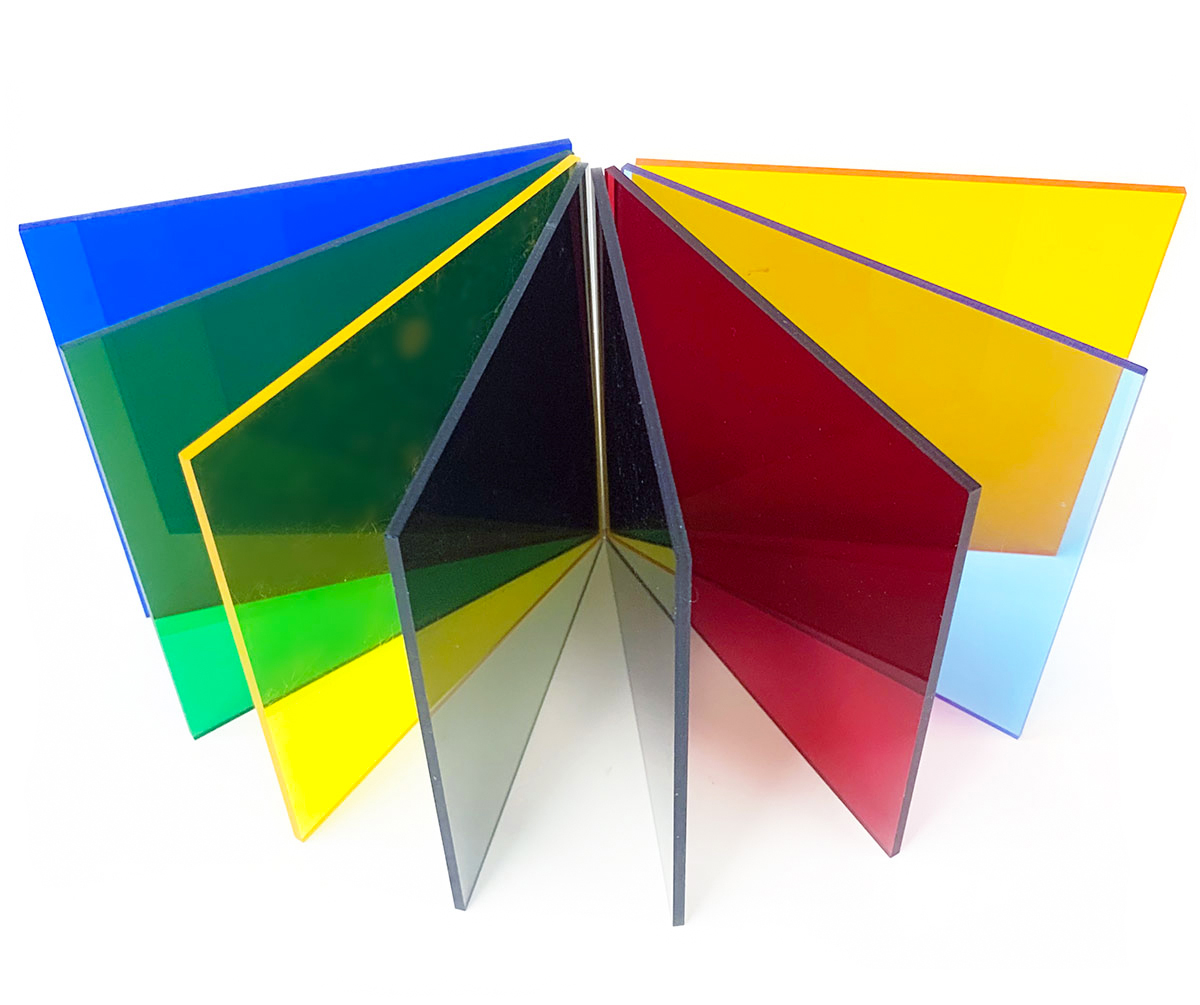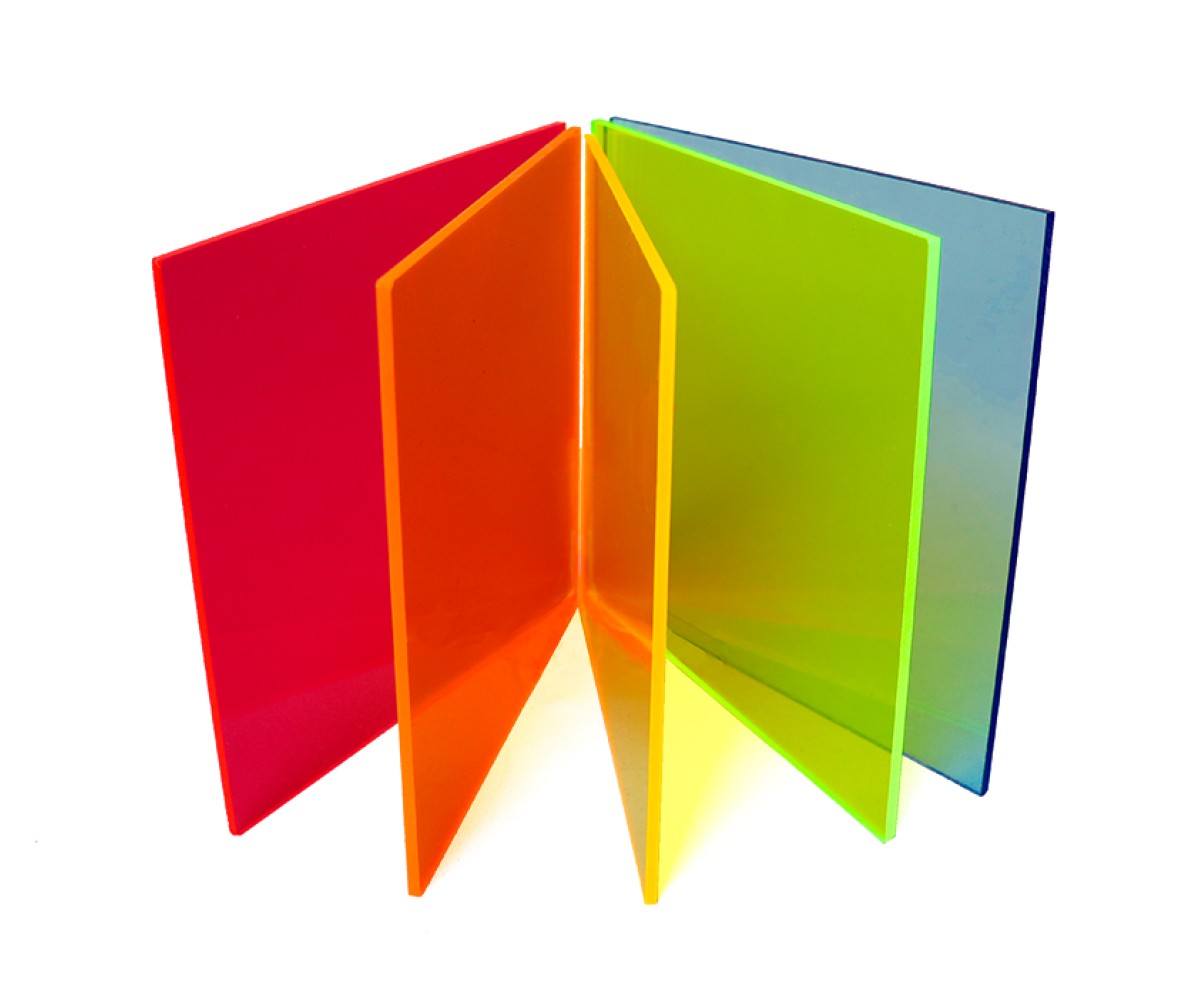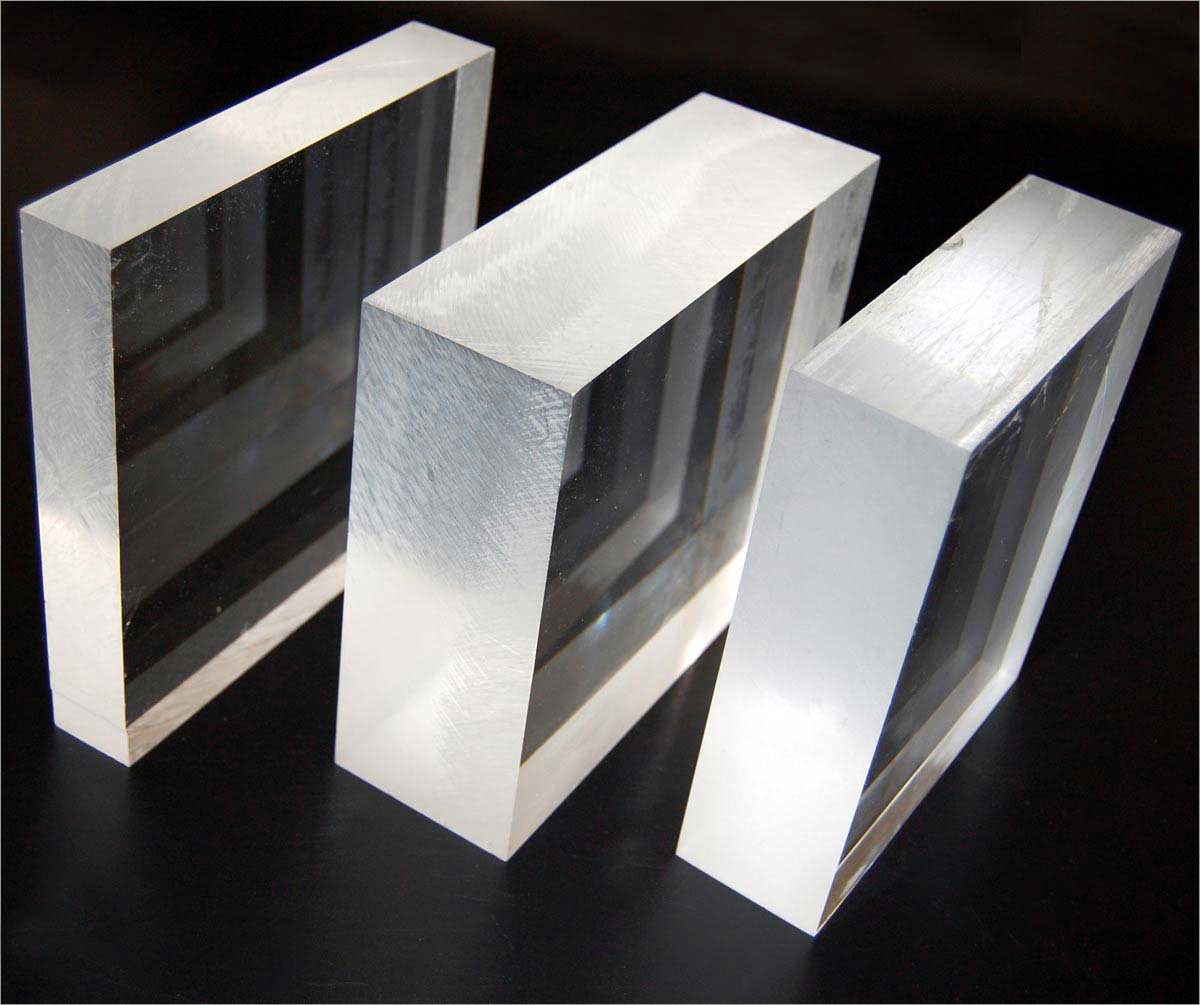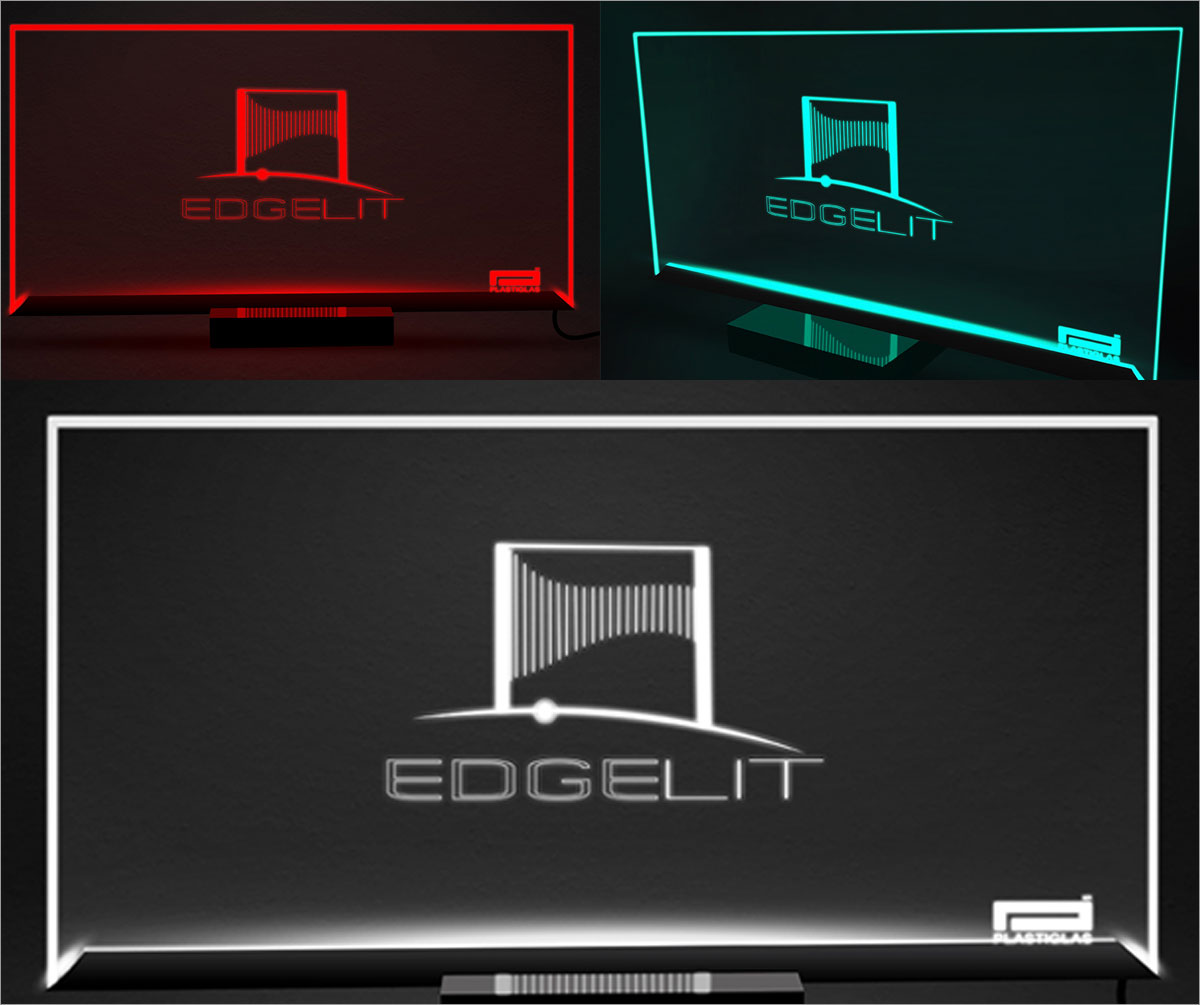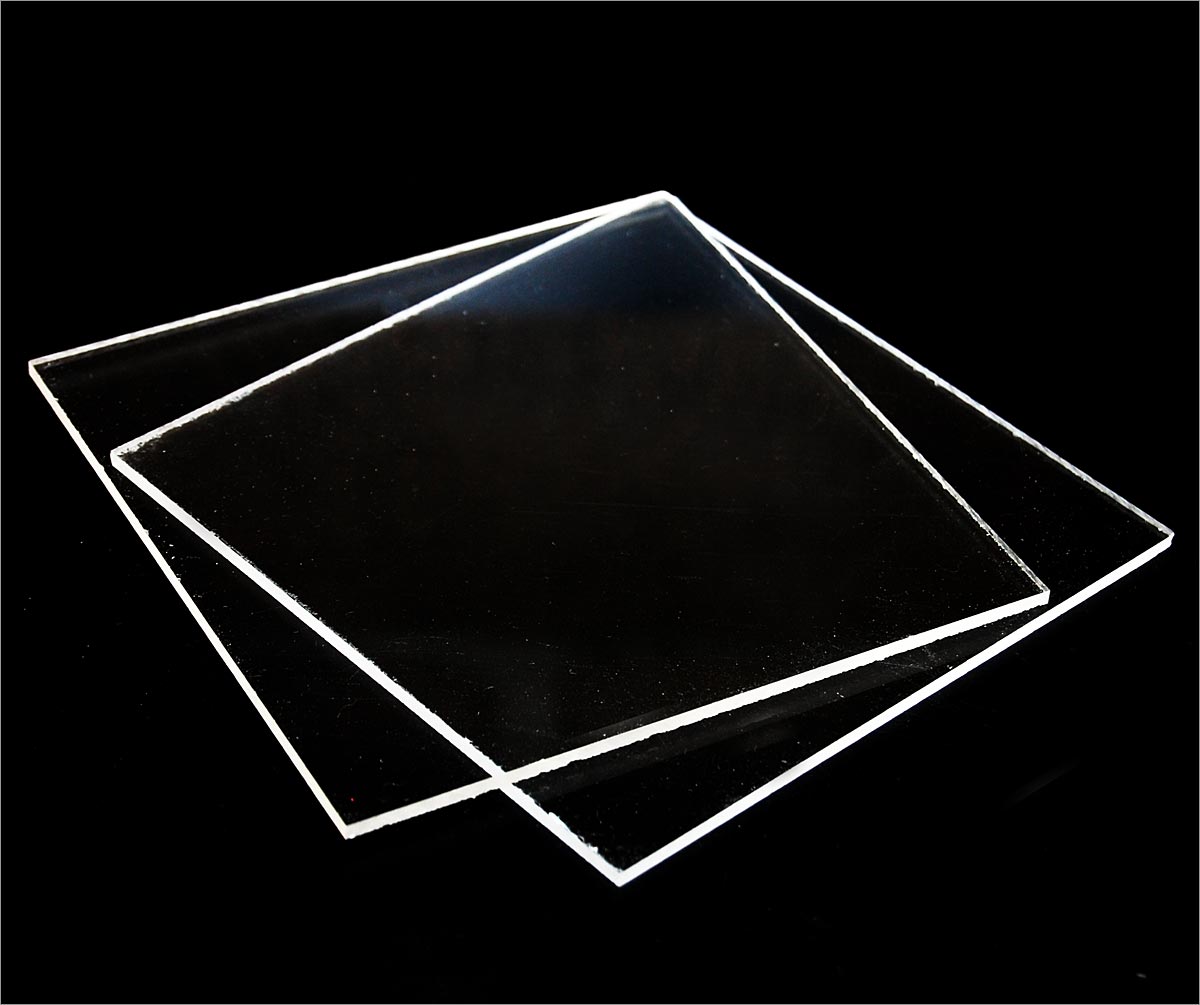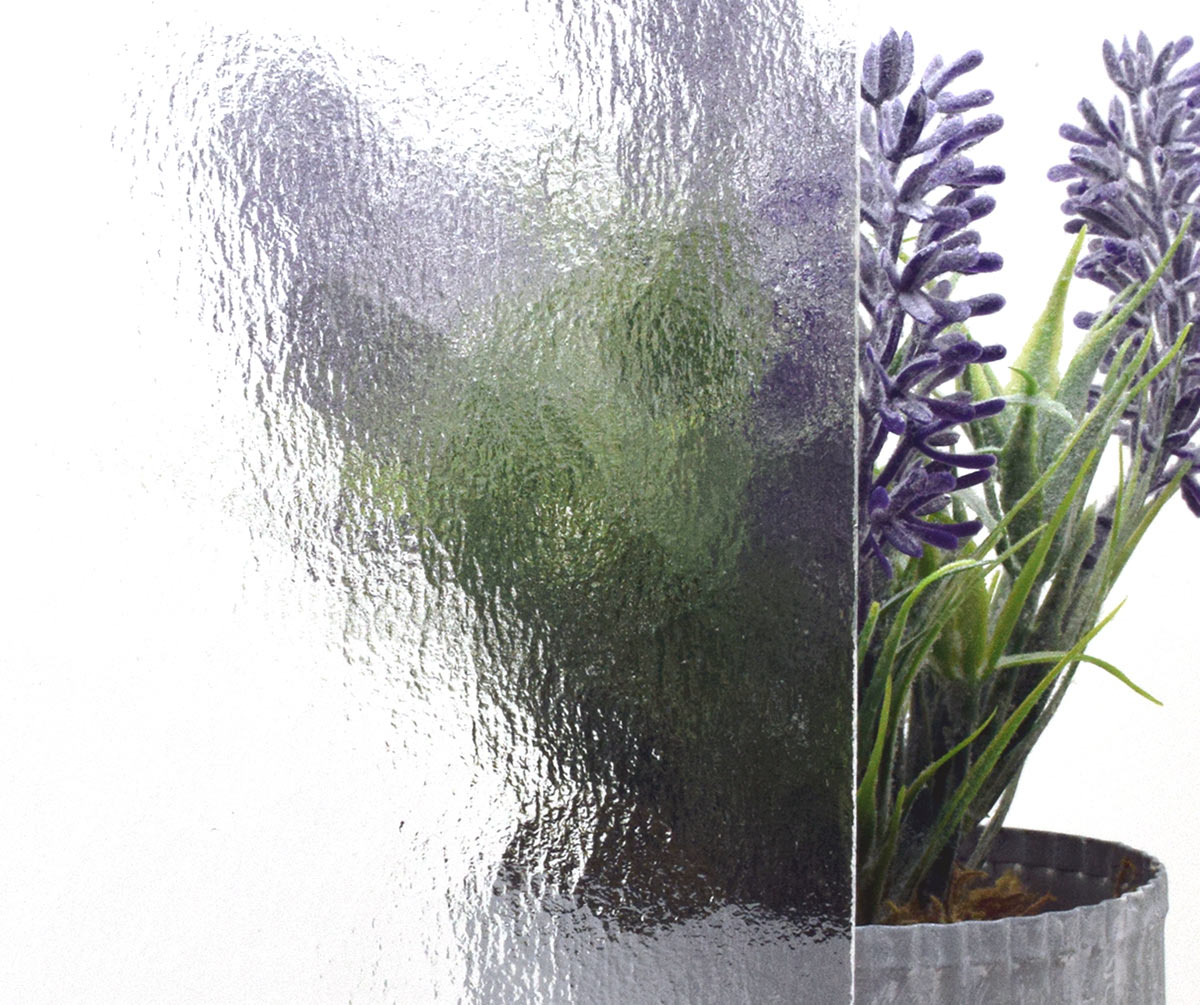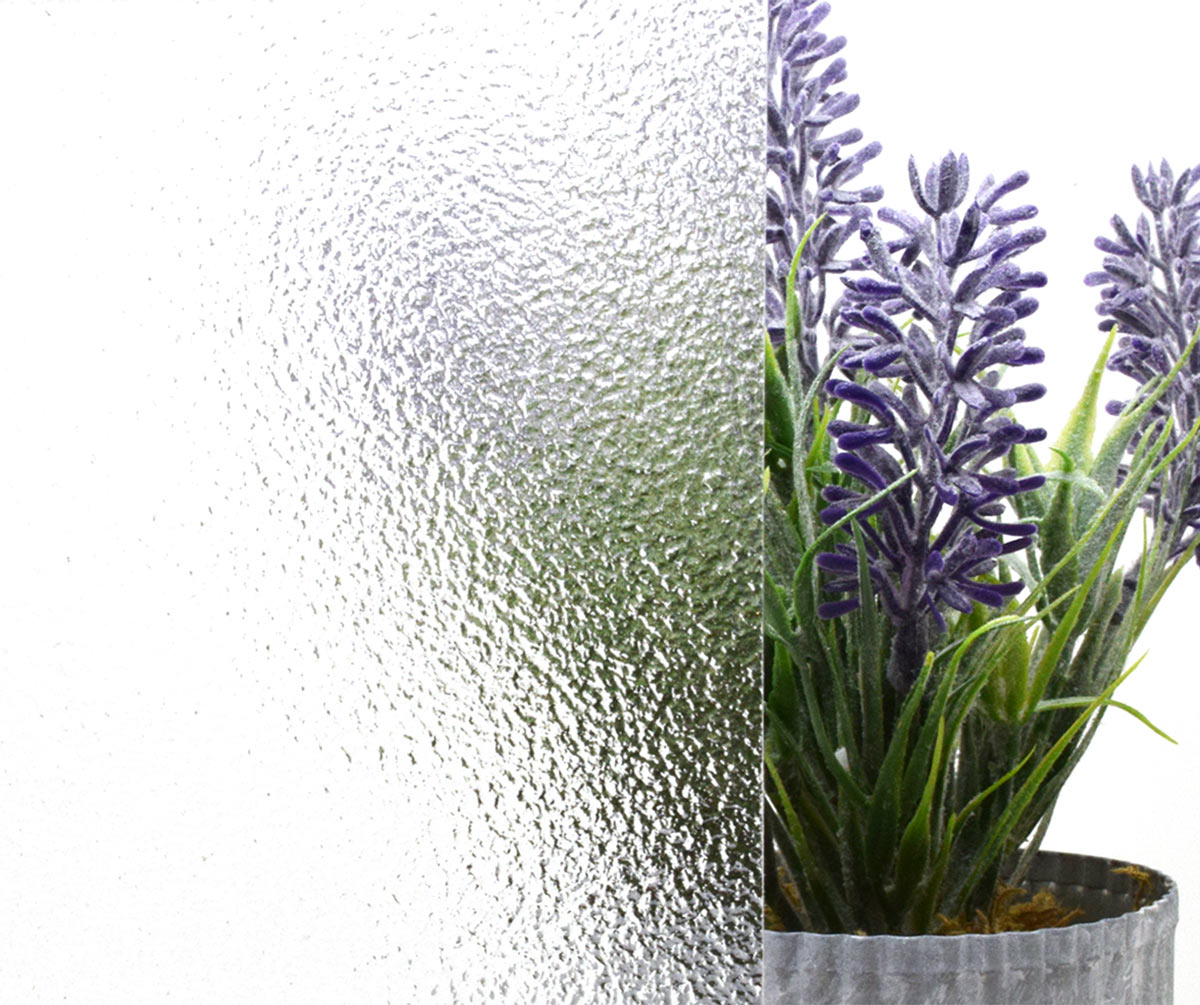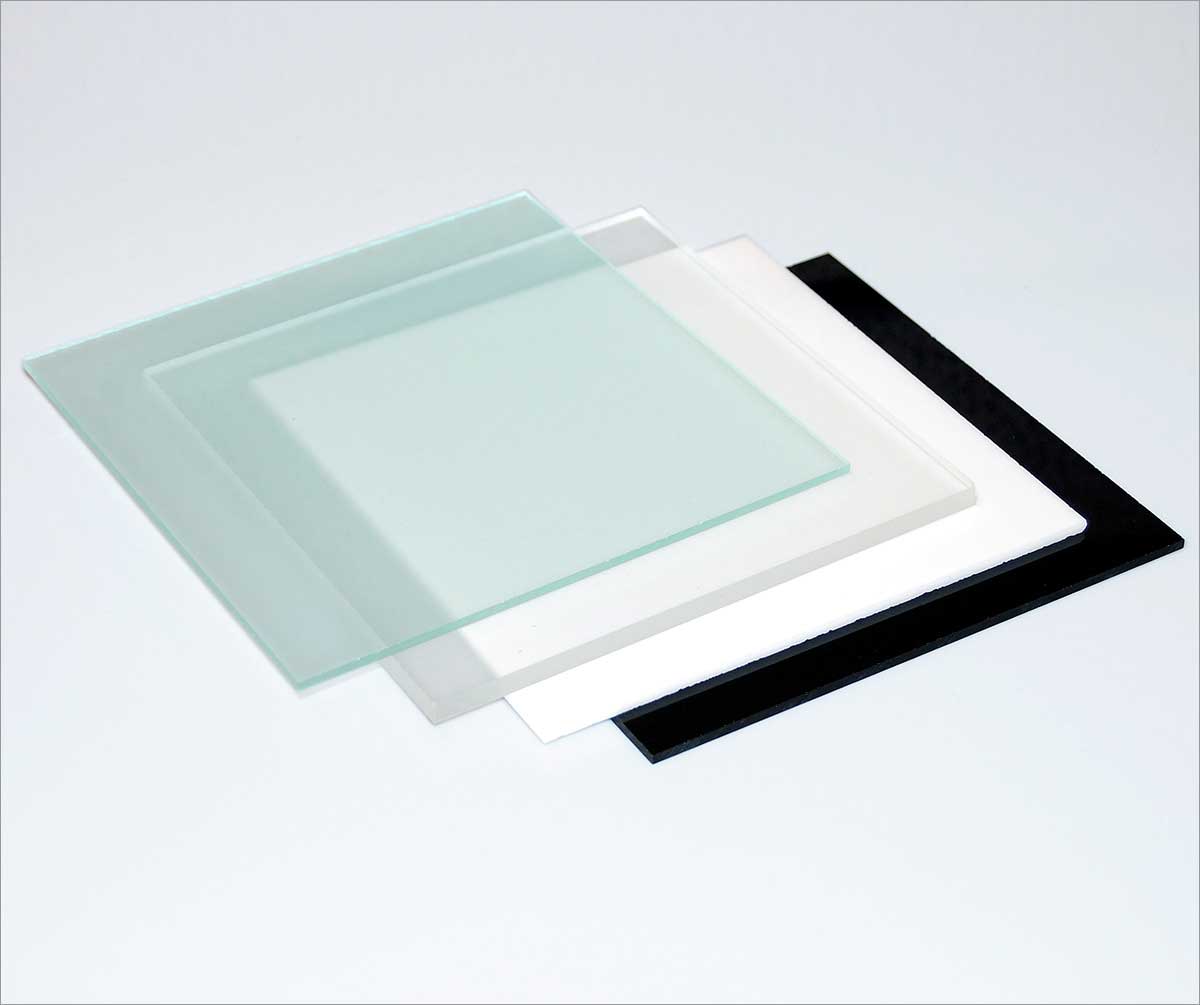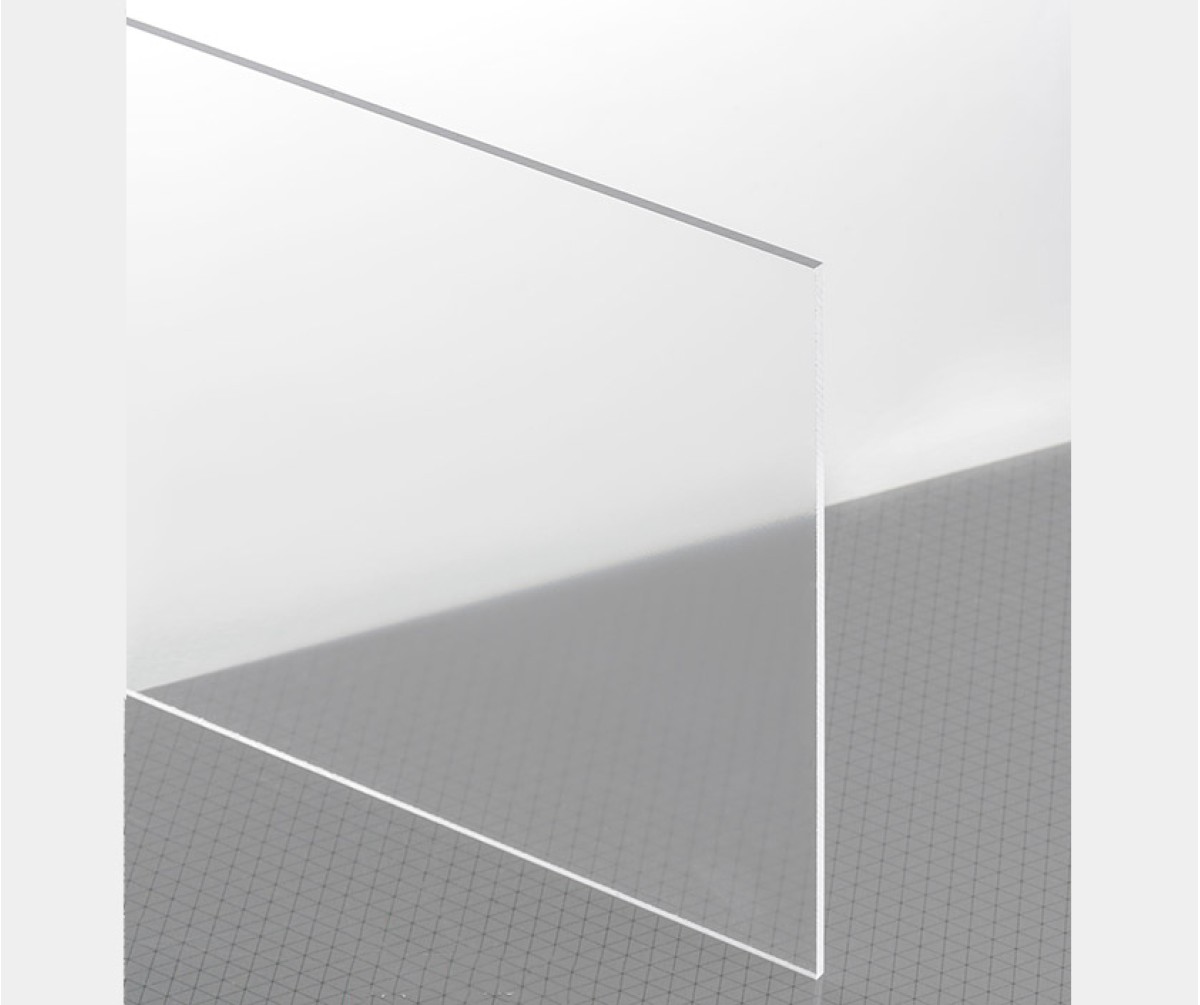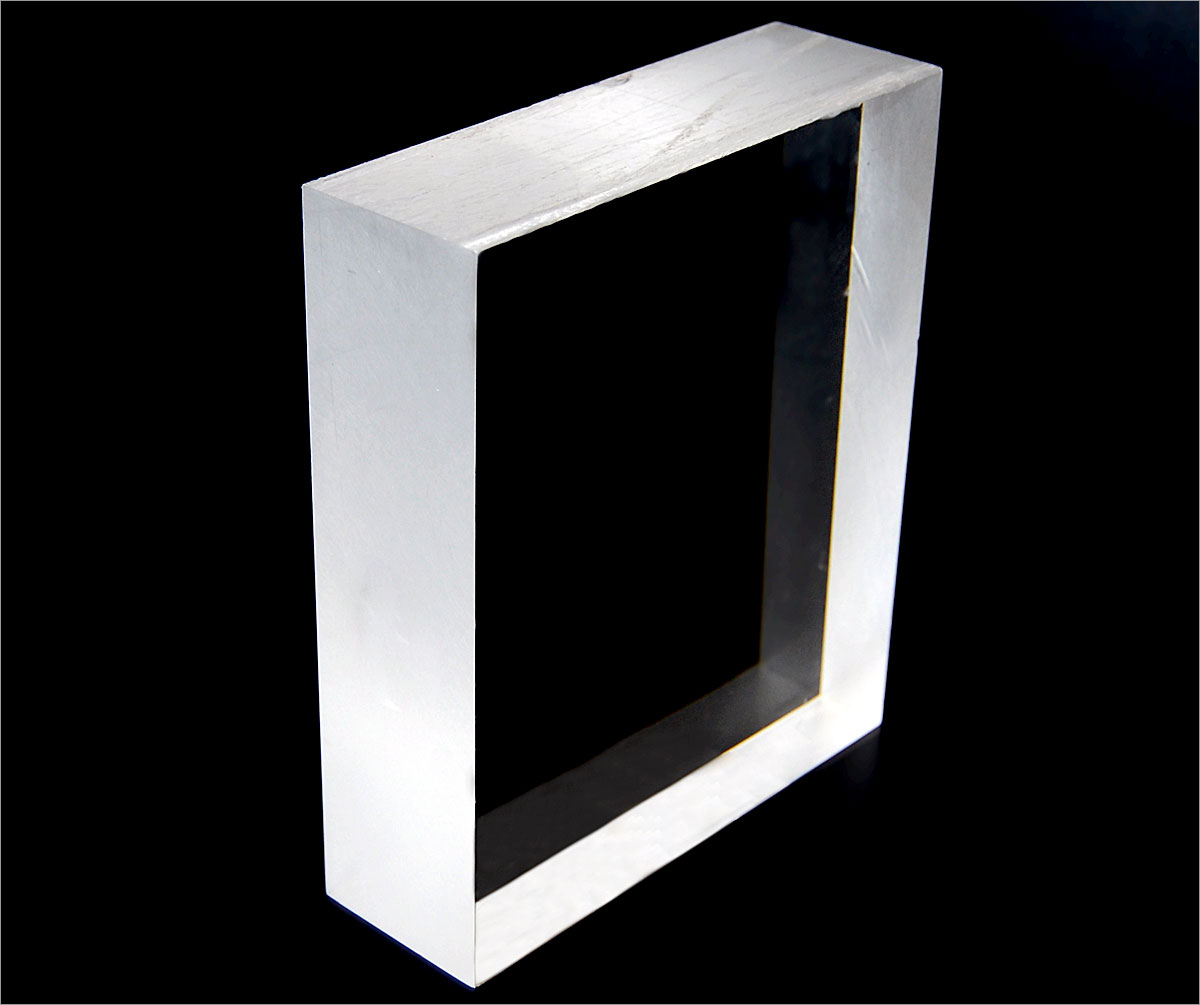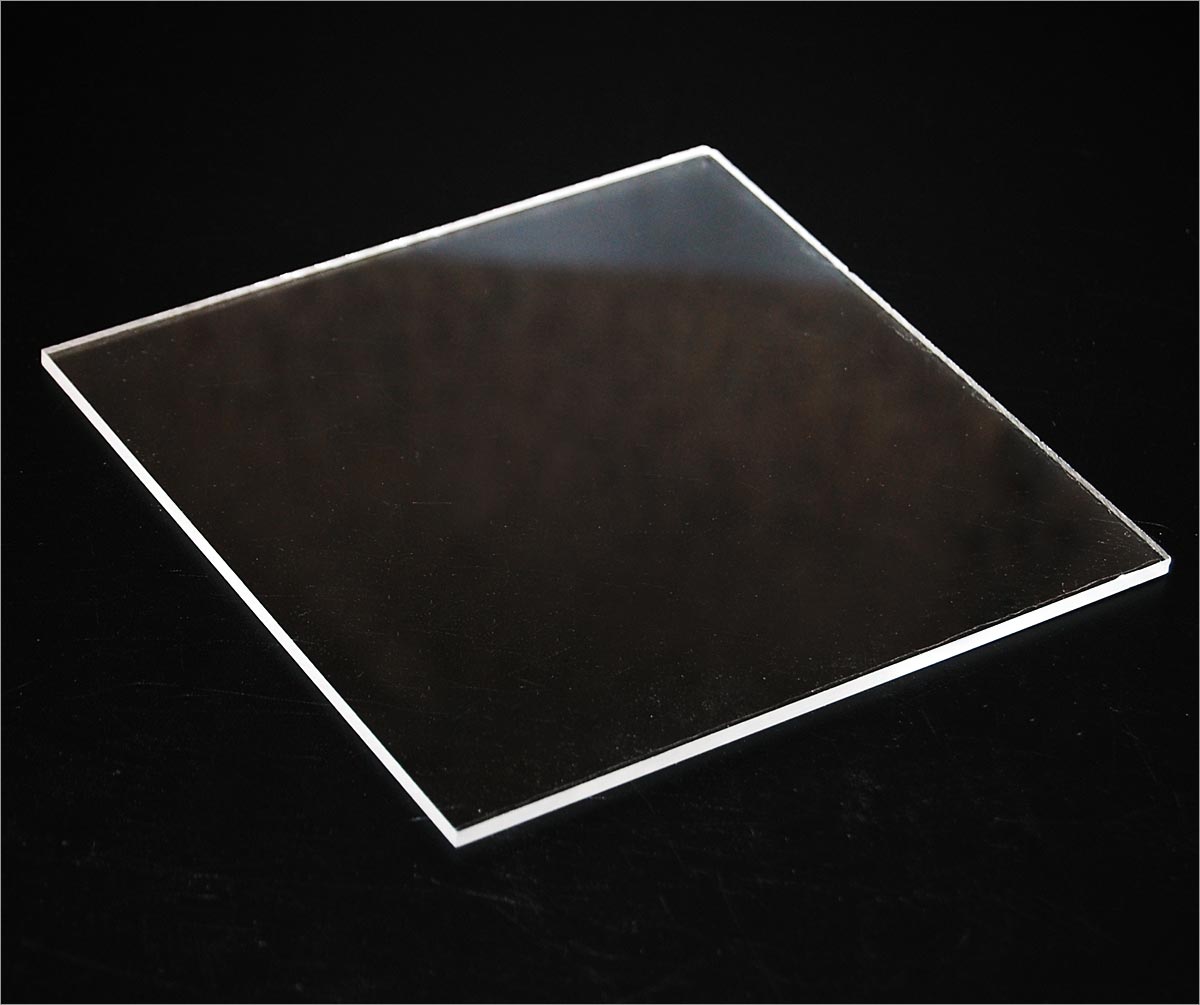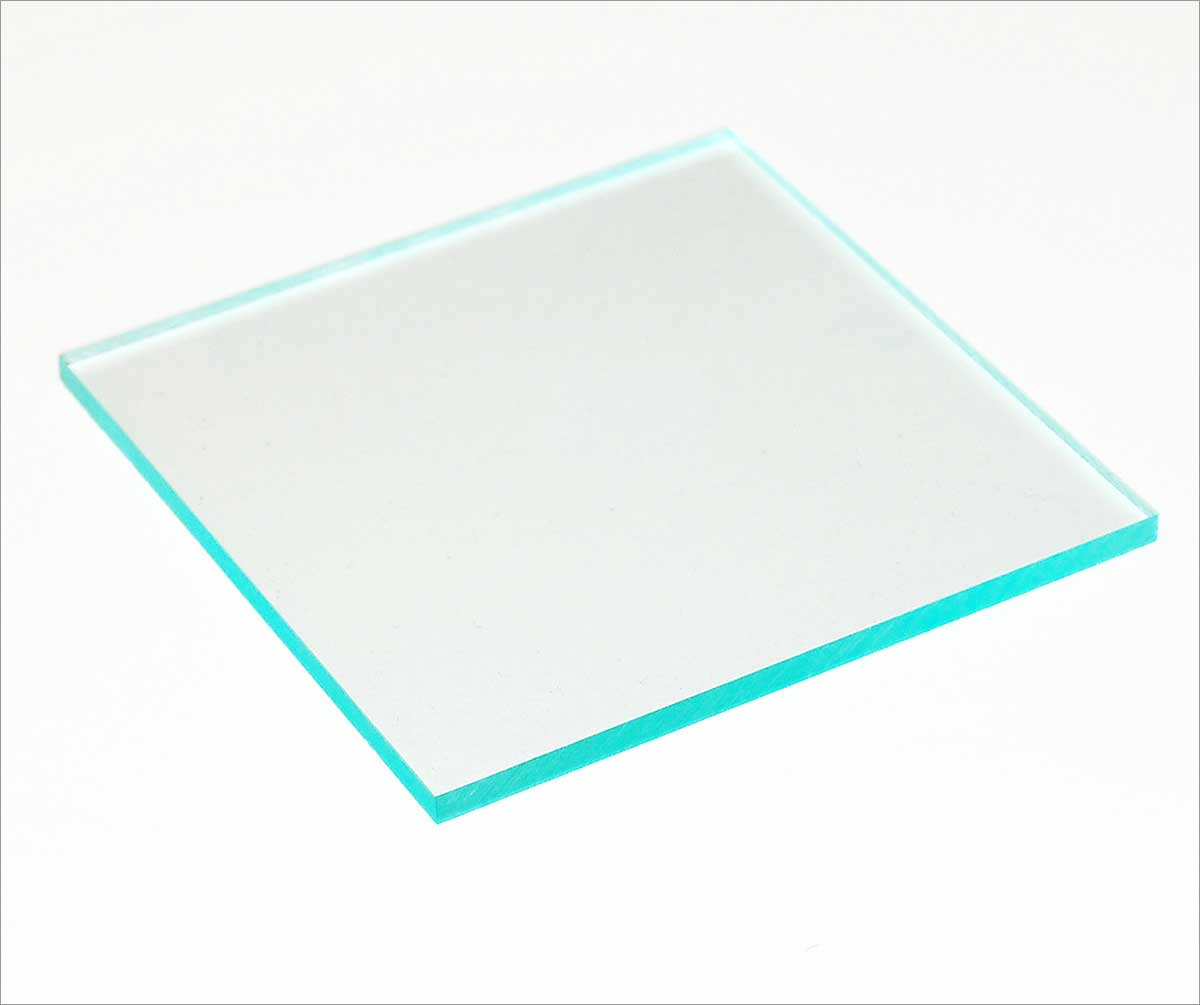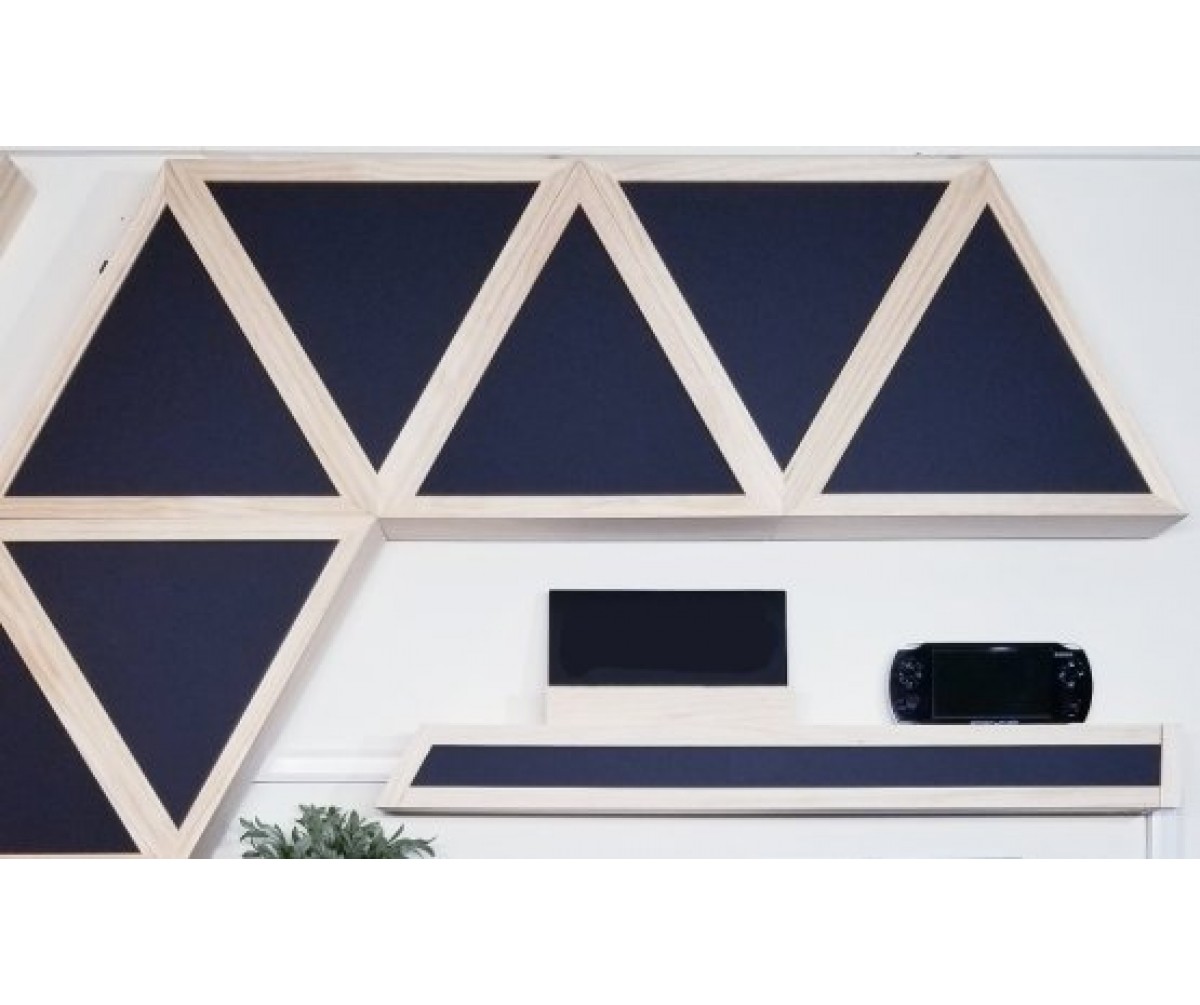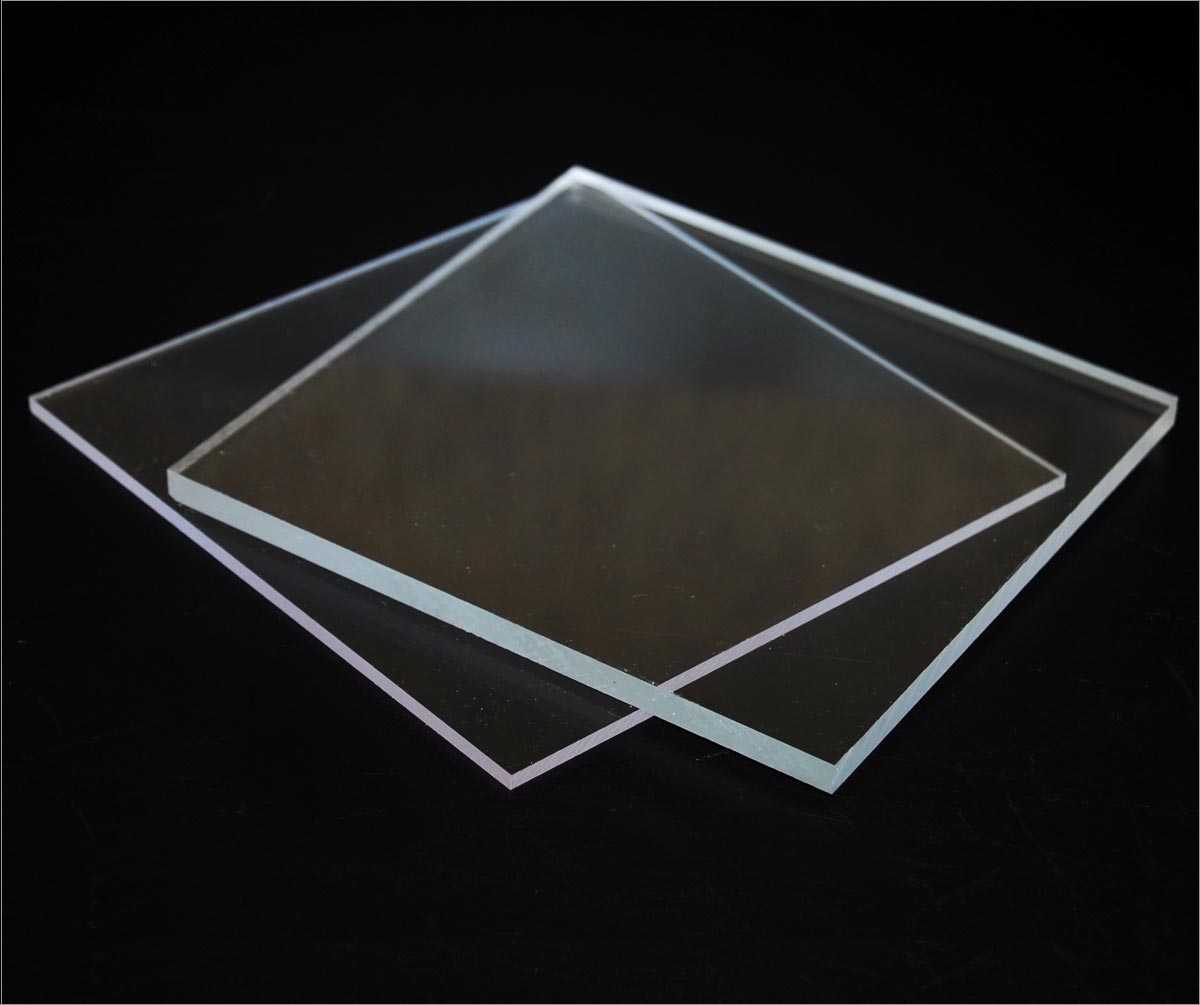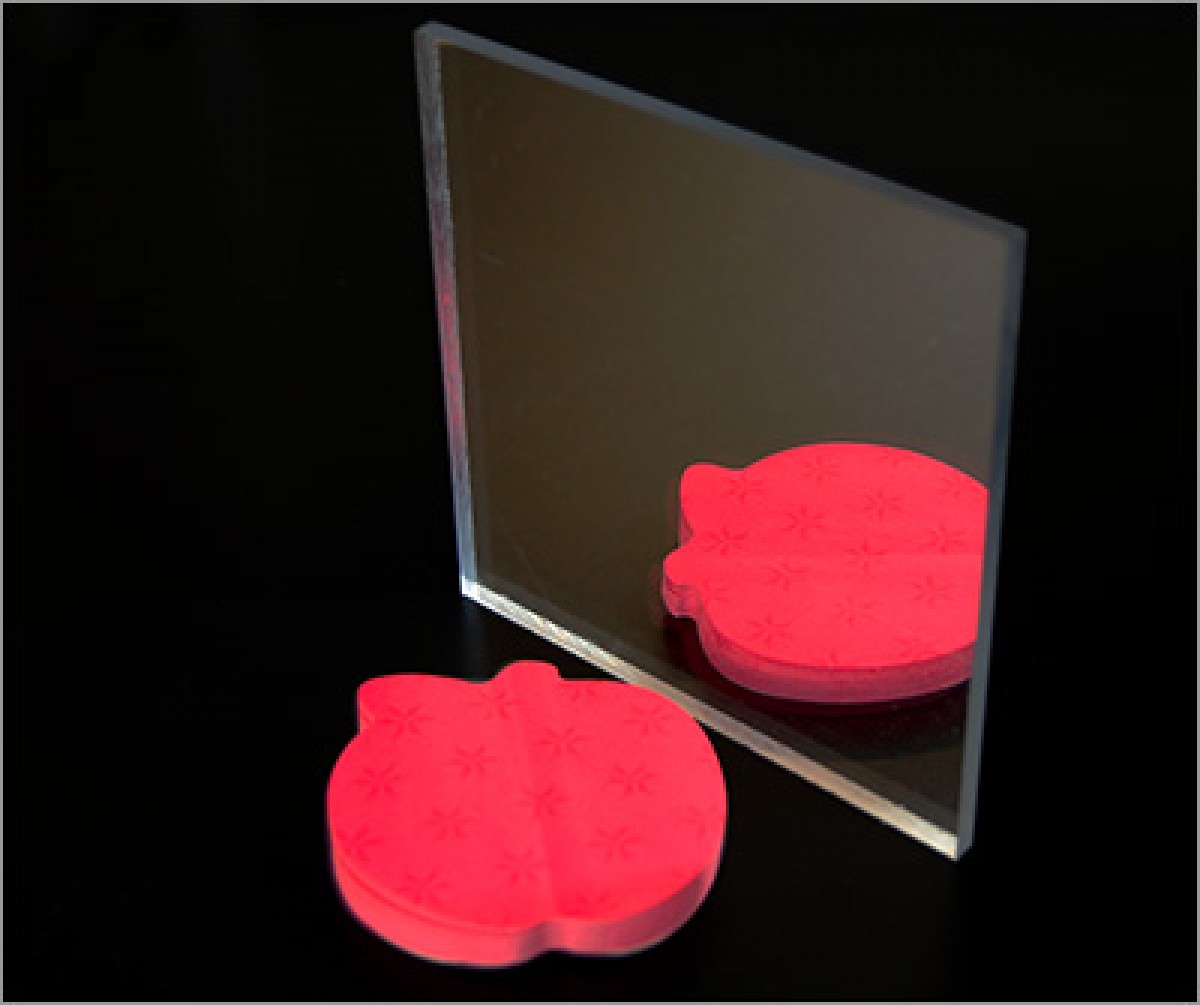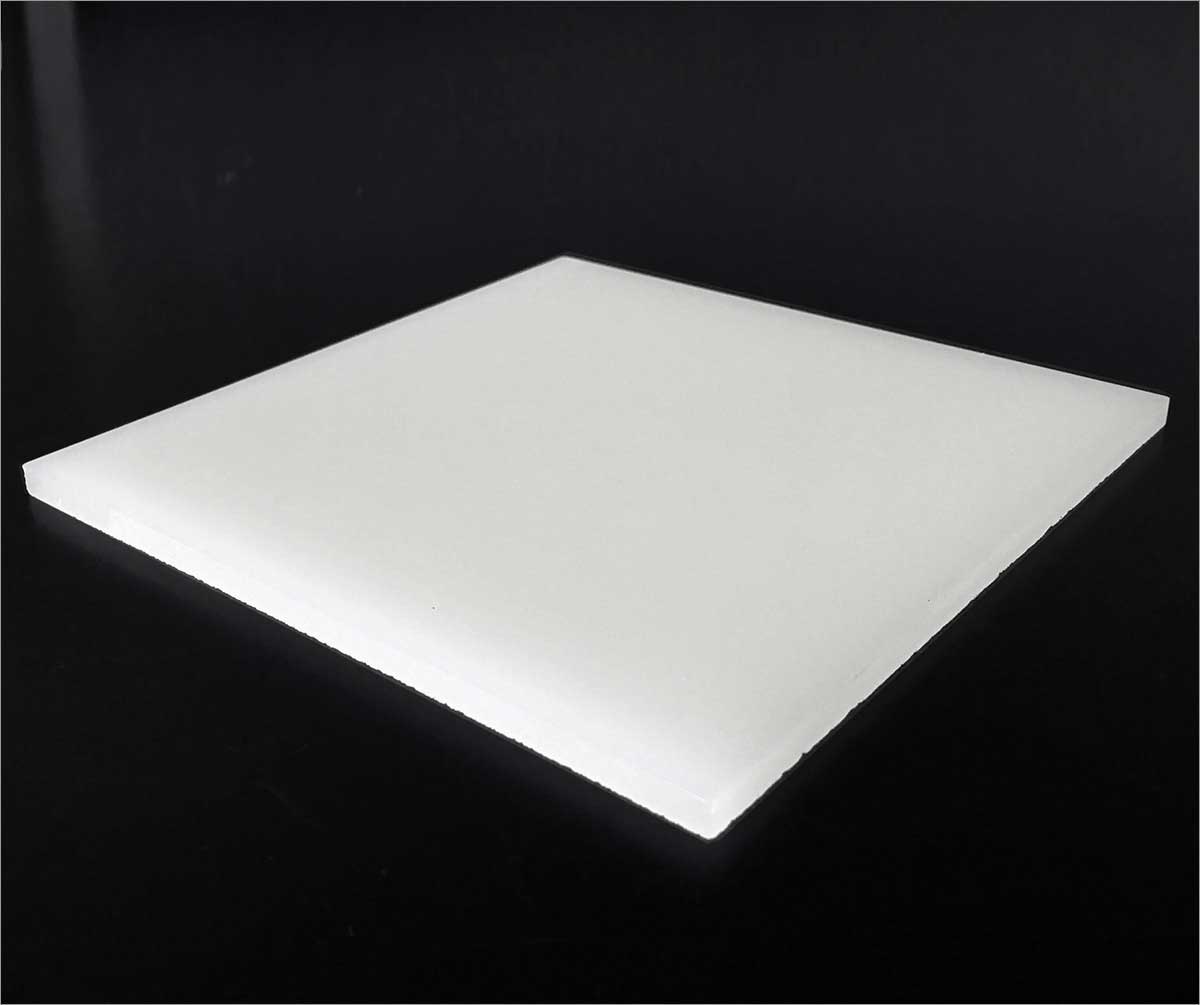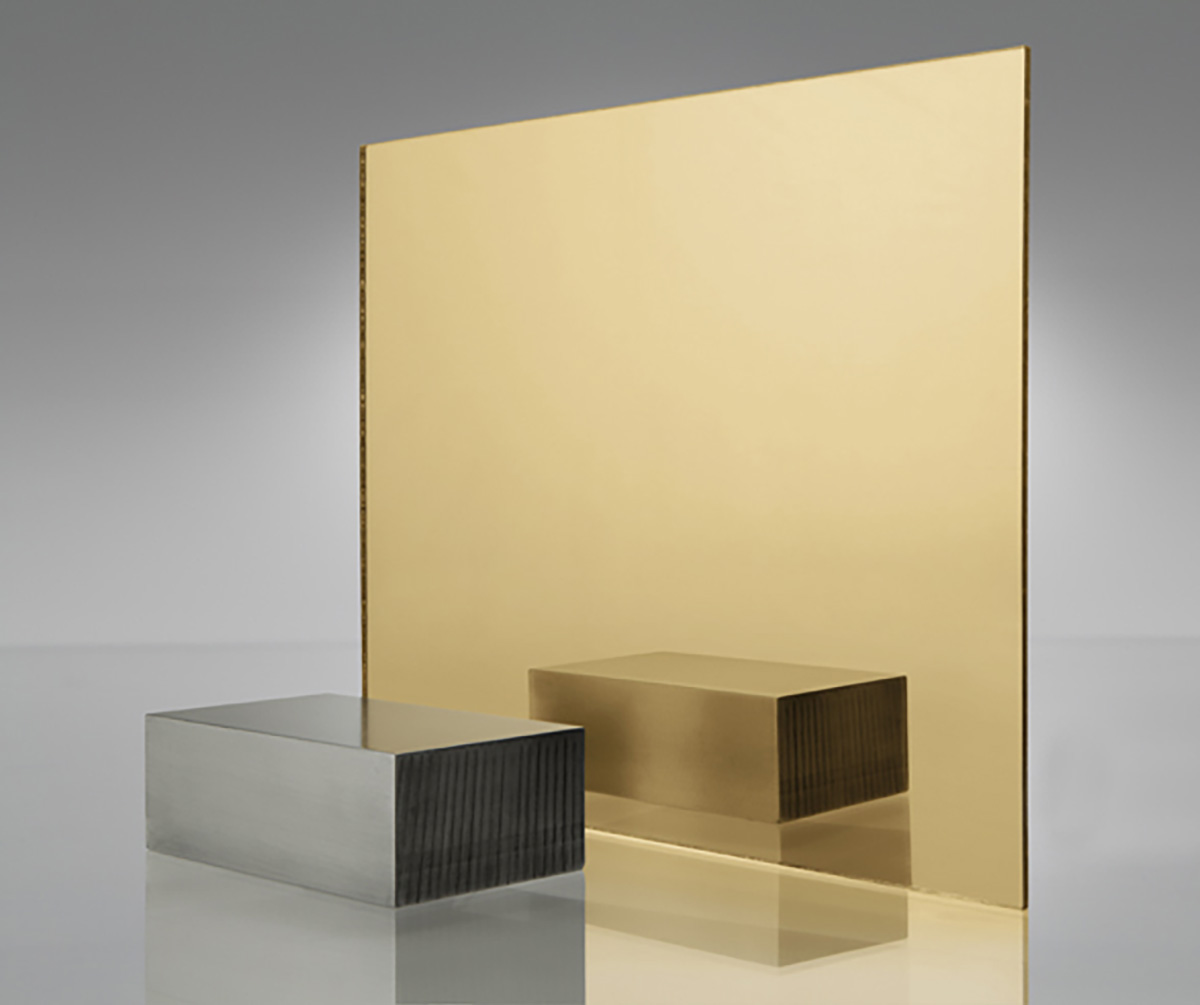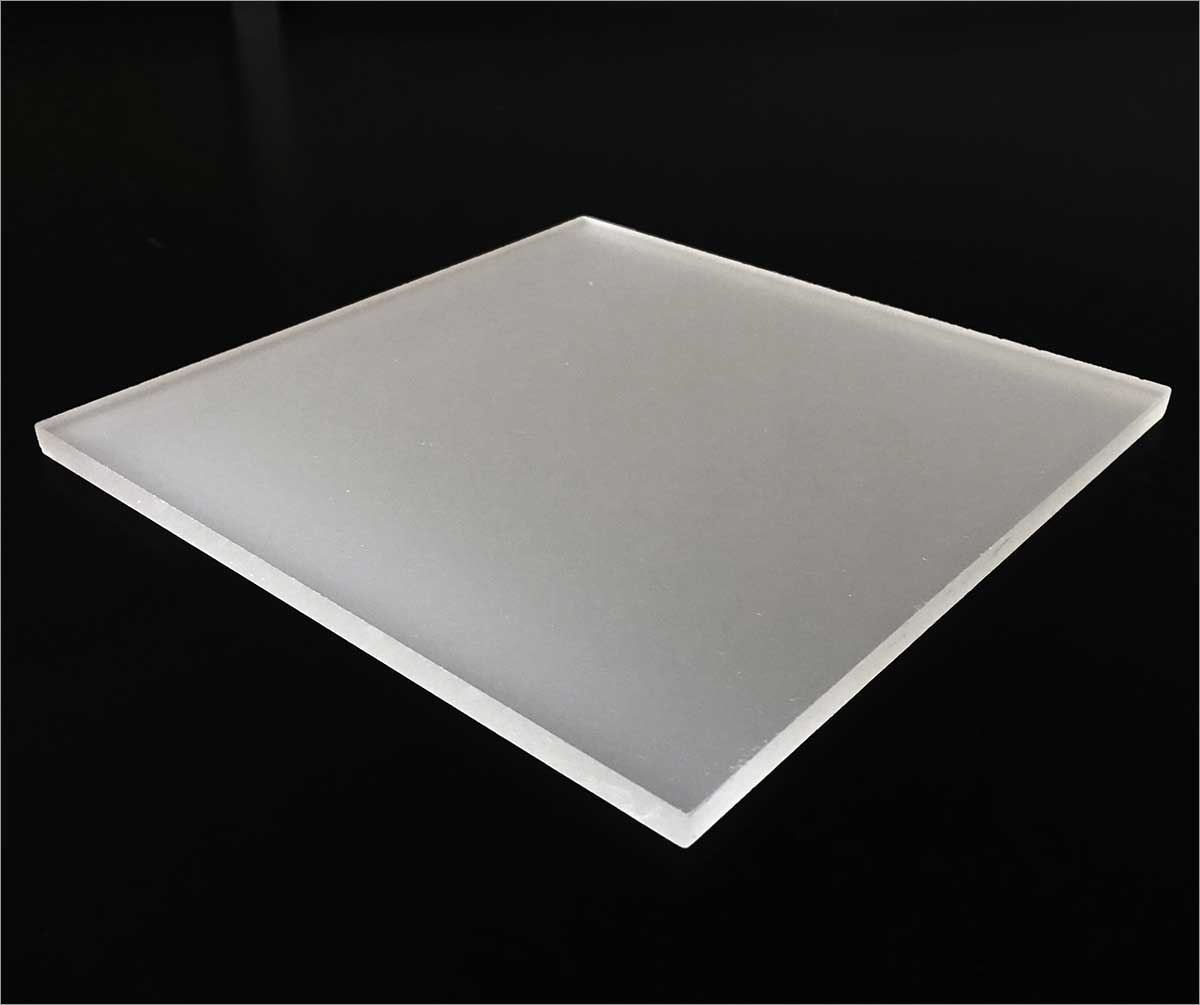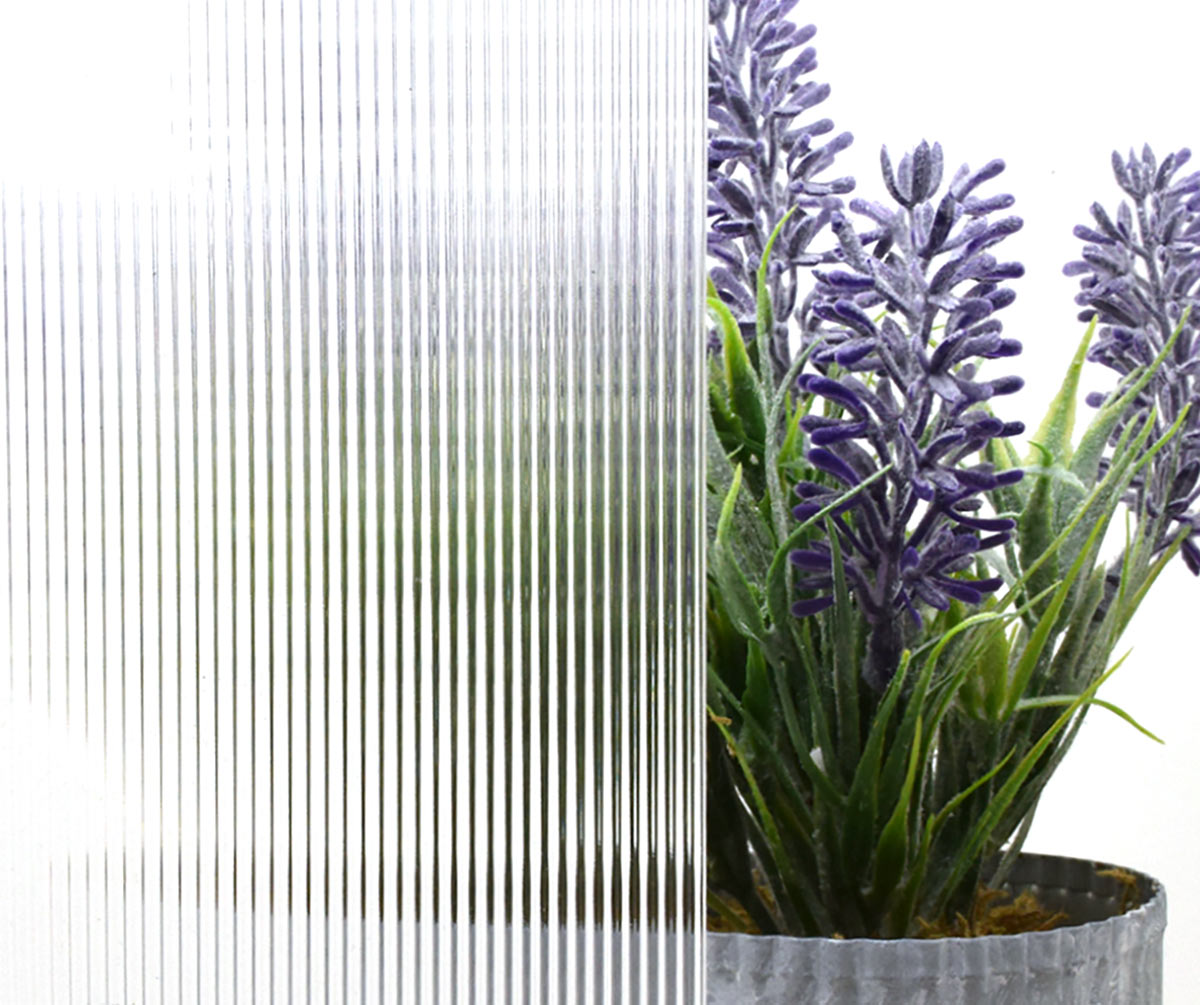Custom Cut Plexiglass Sheets
Clear Extruded Acrylic Plexiglass 1/16” to 1/4” thick »
Clear Premium Cast Acrylic Plexiglass 1/8” to 3” thick »
Get durable acrylic glass from TAP Plastics that’s prefabricated for use in dozens of custom applications and projects. We offer custom cut-to-size acrylic plexiglass sheets in a wide range of colors, grades, and sizes. All the acrylic sheeting we supply is designed to meet the strict demands of many commercial, industrial, and residential applications. Our customers use acrylic plexiglass in construction, signs, enhanced safety and security, windows and skylights, LED lighting applications, home improvement projects, laser engraving, furniture making, merchandising, and more.
Custom-Cut Acrylic Panels
For decades, everyone from home builders to industrial project managers has trusted acrylic plastic. This material is up to 20 times stronger than glass while being significantly lighter and having better light transmission. Acrylic is highly resistant to yellowing, and if it does start to yellow, you can easily polish this away. Furthermore, plexiglass can be manufactured in many thicknesses and colors, and it is easy to fabricate if you need custom shapes.
We are pleased to offer cut-to-size acrylic sheets in a wide range of colors, grades, and sizes from industry leaders in plexiglass and other thermoplastic compounds, including Chemcast, ACRYLITE, Spartech, Gehr and more. Our selection includes options from extruded acrylic and think-cast plexiglass sheets to abrasion-resistant acrylic, textured acrylic, and colored acrylic mirrors. We even have bullet-resistant acrylic for security and protection. You can get textured and frosted acrylic sheets, non-glare sheets, UV-filtering sheets, mirror acrylic sheets and many more so your project has the exact properties you're looking for.
How to Order a Plexiglass Sheet
TAP Plastics makes it easy to get customized acrylic sheets. Specify the color, size, thickness, and quantities of the acrylic glass sheet you need using the Cut-to-Size Calculator. We will make your custom plexiglass following the exact specifications you provide. Order online for delivery anywhere in the U.S. or visit a TAP Plastics store where we can have your acrylic sheets ready in five minutes or less. For an added fee, we will add holes, rounded edges, and other customizations to make installation easier.
Select a type of plexiglass sheet to visit the product information page and learn more about its construction, uses and certifications. We also have put together a plexiglass acrylic guide below, and if you have specific questions, you can call (888) 827-7330 or email us at info@tapplastics.com. We are a leading thermoplastic supplier of the products you need for any DIY or business use. Whether you need a clear acrylic sheet, a translucent sheet or an edge-lit plexiglass sheet, TAP Plastics is here to assist.
What is Plexiglass?
Plexiglass® is a brand name for acrylic plastic, a synthetic polymer developed in 1928.
Acrylic is often used as a glass alternative—hence one manufacturer branded it Plexiglass® in 1933. It has gone by many other trade names as well, including Lucite, ACRYLITE, ChemCast, and Perspex.
Acrylic starts as the liquid chemical compound methyl methacrylate (MMA) and a catalyst is introduced to begin polymerization that turns it into a solid plastic after being heated and cooled. The finished poly methyl methacrylate (PMMA) sheet can be either cell cast in a mold or extruded from PMMA pellets to create what we know, generically, as plexiglass.
Plexiglass and acrylic are the same material, polymethyl methacrylate (PMMA), and have become so synonymous that the names are often used interchangeably. Other brand names for acrylic plexiglass include ACRYLITE, Chemcast, and Lucite. PMMA is commonly used in sheet form as a replacement for glass but there are many other uses for this transparent thermoplastic such as crafts, furniture, and in the medical field. As explained above, plexiglass became widespread as a synonym for impact-resistant clear plastic sheets that can be cut to size for any project.
Plexiglass Sheets: Features and Benefits
- Approximately half the weight of glass
- Break-resistant and impact-resistant
- Resistance to weathering and aging
- Resistance to heat and chemicals
- Colorfast and continuous throughout
- Easy to bond and thermoform
Applications of cut-to-size plexiglass sheets include:
- Anti-theft displays
- Window panes
- Eyeglass lenses
- Aquarium/terrarium
- Framed artwork or photographs (OP-3 UV filtering protects photos/art from fading due to sun exposure)
- Furniture such as a shower stall in your bathroom or a tabletop in your kitchen
- Partitions and enclosures
- Greenhouse construction - plexiglass sheets let the light in but keep the weather out
- Crafts - plexiglass is lightweight and easy to mold, cut, and paint. It also comes in a wide variety of colors
- Containers, signs and bins
How to work acrylic plexiglass:
- Cutting: with knives, scribers, power saws, and hand saws
- Drilling, Routing, Shaping, Turning, and Glazing
- Finishing: scraping, filing, sanding, and polishing
- Forming: strip heating, drape forming, surface molding, and vacuum forming
- Joining: capillary cementing, dip or soak cementing, and viscous cementing
Plexiglass Sneeze Barriers and Disease Transmission
Since the COVID-19 pandemic, we've seen transparent plexiglass sheets now displayed prominently across all commercial industries as a barrier against germs. No longer just the sneeze guard at the buffet line, plexiglass has popped up everywhere, from coffee shops to dental offices and schools. This is just one more use for acrylic panels that demonstrates their versatility and effectiveness in many environments.
The Difference Between Cast and Extruded Acrylic
We offer two different kinds of acrylic sheets: cell-cast and extruded. Both types of acrylic polymers result from chemical reactions between monomers and catalysts. Each type of acrylic has its characteristics and features. With an array of glossy, matte, and textured sheets at the ready, finding the best material for your application is easier than ever before. Best of all, we offer a handful of customization services to suit any set of needs.
Cast acrylic is the highest quality acrylic available, providing the greatest optical clarity and thermal stability. Casting acrylic is labor-intensive and involves mixing liquid ingredients in glass molds. Although it is more expensive, the process of casting yields a more rigid, sturdy, and homogenous product, making it ideal for large structures and installations. Casting also lends to more chemical resistance than extrusion, making cast acrylic ideal for applications involving fragrance, lotions, or other solvents. Thick cast acrylic is well-suited to applications where standard sheets won’t do the trick. These super-thick, crystal-clear, and distortion-free sheets are great for machining.
Extruded acrylic is made by continuously pushing acrylic mass through a form to yield an impact-resistant, heterogeneous product. Properties may vary depending on the direction of extrusion. Extruded acrylic is more affordable and dimensionally stable than cast acrylic, making it a cost-effective solution in general fabrication and a wide range of applications. Due to its malleability and low melting point, this acrylic is better suited t polishing as well as cementing and thermoforming. Extruded acrylic is also less susceptible to dirt, lint, or particulate contamination in the production process. Like cast acrylic, it will not yellow as a result of prolonged sun exposure due to its ability to resist ultraviolet light degradation. Despite cold, heat, humidity, and sunlight, our transparent acrylic sheets maintain original color and appearance. You can use extruded sheets in greenhouse glazing, shed or garage window installation, and a variety of indoor applications.
Acrylic Sheet Solutions
ACRYLITE® acrylic sheets are among the highest-quality plastics manufactured in the world. These thermoplastic panels are often used as a lightweight alternative to glass and other materials because they offer excellent optical quality, high light transmission, weather resistance, and sound reflection. Like most plastics, ACRYLITE sheets respond to temperature changes by expanding or contracting at a far greater rate than glass. Some shrinkage may occur when general-purpose ACRYLITE is heated to a forming temperature, but post-forming stability is exceptional.
Acrylic sheets are also more flexible than glass and many other building materials. If insulation is a concern for the project at hand, you will be relieved to know that ACRYLITE’s surface resistivity is higher than that of most plastics. In fact, ACRYLITE extruded acrylic has a light transmittance of 92%, compared to 80-90% transmission for most clear glass products, and is warranted not to lose more than 3% of its light-transmitting ability in 10 years. UV-filtering acrylic absorbs more than 98% of the radiation in the ultraviolet range below 400 nanometers.
Plexiglass sheets offer an energy-efficient alternative to standard glass, which is conducive to residential applications such as window glazing, designing a backsplash in a kitchen, updating cabinets, and so much more. Transparent-colored ACRYLITE can be used to reduce glare and solar energy transmittance. Plexiglass also has excellent resistance to attack by many chemicals. At only half the weight of glass and approximately 43% the weight of aluminum, acrylic sheet offers a lightweight alternative that is safe and easy to install. Acrylic panels can also be sectioned in a wide variety of ways, using hand tools or power tools. The possibilities of acrylic are endless.
At TAP Plastics, we have a variety of sheet products to choose from that are cut to size. Here’s an overview of our main acrylic sheet solutions and the best uses for each.
ACRYLITE AR Abrasion Resistant: If you desire abrasion and chemical resistance on one or both sides, ACRYLITE AR sheets may be just what you need. AR acrylic is ideal in areas where frequent handling, heavy traffic, and regular cleaning are commonplace. These highly resistant acrylic panels have been used for store fixtures, furniture, menu boards, picture framing, instrumentation displays, sports arena glazing, museum vitrines, architectural glazing, machine guards, touch screens, and more.
Chemcast BR Bullet Resistant: These acrylic sheets are virtually unbreakable, giving them a distinct advantage over glass in terms of safety and security. Chemcast BR is a transparent cell-cast acrylic sheet that meets UL752 Level 1 requirements, which is the specification used to identify a material’s level of bullet resistance. Thickness tolerances are consistently checked on a sheet-by-sheet basis to ensure that the material will provide the required protection you need. Bullet-resistant acrylic can be cut, cemented, flame-polished, and fabricated for indoor or outdoor applications using many of the same techniques used for a standard sheet.
- BR 1.25 sheets are 1.25-inch thick, transparent cell-cast acrylic sheets that meet the UL752 Level 1 requirements.
Acrylite Extruded Acrylic: If extruded acrylic is better suited to your specific application, these continuously manufactured acrylic panels may be the solution you need. Extruded acrylic offers the easy handling and processing of extruded products along with the high optical characteristics and low-stress levels expected of cast products. Our customers have used this lightweight, rigid, and weather-resistant thermoplastic for skylights, signage, window glazing, window frames, picture framing, point-of-purchase (POP) displays, optical displays, and more.
Chemcast GP (General Purpose) Acrylic: If a cell-cast acrylic sheet is better suited to your specific application, this general-purpose sheet may be perfect for your project. Chemcast GP offers excellent optical characteristics, thickness tolerances, light stability, and low internal stress levels for consistent performance. These versatile acrylic sheets can be easily sawed, machined, thermoformed, and cemented, making them suitable for most commercial applications. Plus, it absorbs ultraviolet light up to approximately 360 nanometers. Chemcast GP has been used for decorative paneling, lighting fixture diffusers, aquariums, hockey rinks, shower enclosures, school glazing, signage and more.
ACRYLITE OP-3 UV Filtering Acrylic: If you need a greater ultraviolet light transmission for framing articles of value or professional artwork, look no further. ACRYLITE OP can handle the demands of any framing or glazing application, while providing museum-quality UV protection and the finest optical clarity imaginable. Sheets are made of natural high polymers from cellulose and protein which are particularly sensitive to UV radiation. These continuously manufactured UV-filtering sheets defend against irreversible damages caused by both natural and artificial light, protecting paper-borne artwork, prints, and other documents from fading, yellowing, or becoming brittle over time. Best of all, the UV protective qualities are part of the sheet structure and cannot be scratched away.
ACRYLITE Resist 65 High Impact Acrylic: Are you looking to save without sacrificing the structural integrity of your application? Formerly known as ACRYLITE PLUS, this impact-modified sheet combines the beauty and clarity of acrylic with high-impact performance for longer-lasting, more cost-effective store fixtures and point-of-purchase (POP) displays. ACRYLITE Resist can be easily fabricated and machines, including cutting, routing, forming, and cementing. Our customers have used ACRYLITE Resist 65 sheets in the design and construction of greenhouses, hotels, offices, retail facilities, and much more. Even in dim areas, this high-impact acrylic sheet maximizes light and visual clarity.
ACRYLITE Satinice White and Colorless: Wherever optimum light diffusion is required, we have you covered. Satinice acrylic sheets strike the perfect balance between light diffusion and transmission, making them the preferred acrylic surface for backlit application. Satinice clear acrylic features a frosted appearance from edge to edge, and the attractive surface is exceptional at hiding fingerprints, scratches, or signs of wear and tear. We offer both clear and white sheets that can be used to make stained glass windows, illuminated benches, privacy partitions, exhibition booths, and more.
Chemcast Black LED Plastic Sheets: One of the top concerns for people who produce backlit signage, commercial lighting fixtures, and POP displays includes LED hot spots. LEDs can cause a dotted pattern on standard acrylic sheet materials, but this isn’t the case with black LED acrylic sheets. Our black LED acrylic sheet hides bright LEDs even in low-profile signs and can transmit light of any color, making them suitable for retail displays, exhibition booths, and more.
Chemcast Clear Green Edge Acrylic: An acrylic sheet with a green-tinted edge creates the sleek and sophisticated look of glass coupled with the performance of acrylic panels. Ribbed plexiglass sheet features a textured yet still transparent surface, making it more of a specialty material for use in partitions, balcony glazing, bathroom cabinets, patio tabletops, and furniture components. Ribbed acrylic textures are bold and fashionable, allowing unique possibilities for designers and other industry professionals. We also supply textured Lucerne FFV and Innsbruck FFX acrylic sheeting for a unique finish
Colored and Textured Plexiglass
Colored plexiglass sheets are ideal for outdoor signs and there is so much variety to choose from. Colored Plexiglass is available in a variety of colors that add visibility and personality to a display; they're also excellent for brand building. Transparent, translucent, fluorescent and opaque colors and all available from TAP plastics under the umbrella of cut to size Extruded Acrylic Sheets, Ribbed Acrylic Sheets and Chemcast Acrylic colored plexiglass. Translucent colored plexiglass is also called sign plexiglass or sign acrylic because it is the ideal material for outdoor signage and will never break down or fade due to UV exposure.
Ribbed plexiglass sheet features a textured yet still transparent surface, making it more of a specialty material for use in partitions, balcony glazing, bathroom cabinets, patio tabletops, and furniture components. Ribbed acrylic textures are bold and fashionable, allowing unique possibilities for designers and other industry professionals.
How To Clean Plexiglass Sheets
Whether used for commercial glazing or residential windows, acrylic (also known as Plexiglass) offers many advantages over glass. Though the two may share a similar appearance, acrylic is more clear than regular glass and is only half the weight yet 17 times more resistant to impact than traditional plate glass. Acrylic is also easy for TAP Plastics to cut to size for use in a wide variety of applications around the home, office, and workplace. You can easily maintain that prized transparency if you know how to clean acrylic properly. In this guide, we will walk you through the process of cleaning acrylic so that you can keep your acrylic surfaces in excellent condition.
Acrylic Plexiglass FAQ
Q1: Is there a difference between acrylic and plexiglass?
A1: Acrylic plastic sheets go by the the brand names of Acrylite, Lucite, Perspex, Chemcast and more. Plexiglass is used interchangeably with acrylic plastic.
Q2: Does plexiglass get brittle in the sun?
A2: Plexiglass does not become brittle in the sun due to its inherent resistance to UV radiation. Unlike some other materials, Plexiglass is specifically formulated to withstand the damaging effects of sunlight. This property helps maintain its strength and prevents it from becoming brittle when exposed to prolonged sun exposure.
Q3: Does plexiglass keep out cold?
A3: Acrylic plexiglass keeps the cold out better than glass, offering a level of heat insulation that is 4 times greater. The highly effective heat retention of acrylic makes it a superior insulator for cost savings and energy efficiency.
